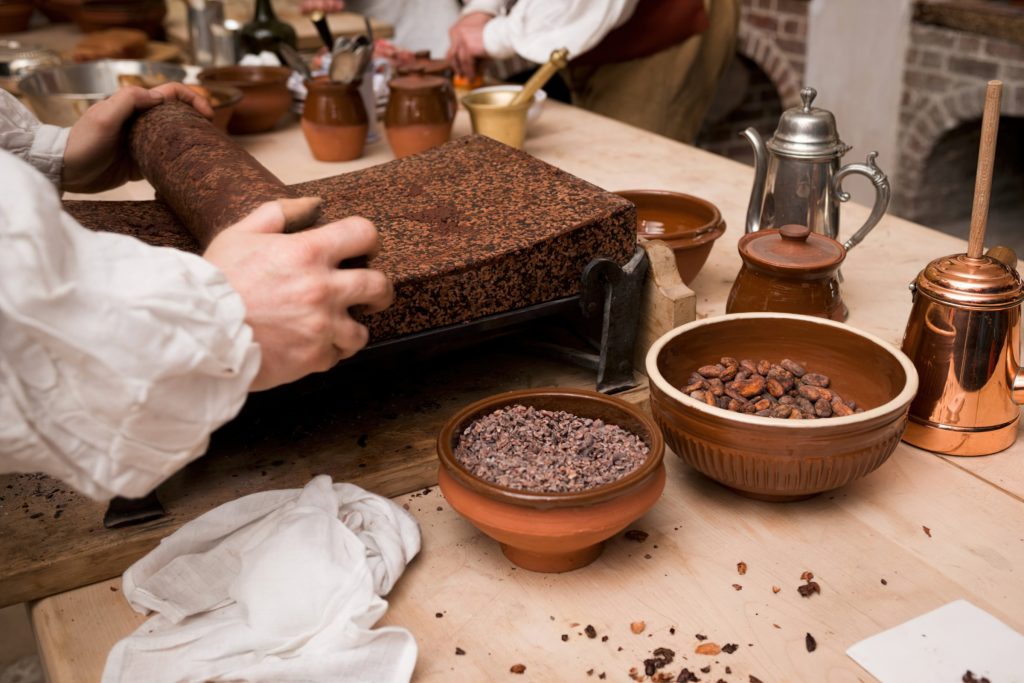Chocolate: A Universal Passion!
Few things in the world evoke as much passion and enjoyment as chocolate. This delightful and versatile ingredient has captured the hearts and palates of people worldwide. In this comprehensive article, we will dive deep into the enthralling world of chocolate, examining the many types available and discussing their unique uses in the culinary arts.
A Brief History of Chocolate
Chocolate’s illustrious history can be traced back to ancient Mesoamerican civilizations, where the cacao bean was initially utilized in beverages. As it gained popularity in Europe, chocolate underwent a transformation, eventually evolving into the recognizable chocolate bars we know and love today. Modern chocolate production has resulted in a vast array of chocolate types, each boasting unique flavors and culinary applications.
An Overview of Chocolate Varieties
- Dark Chocolate Dark chocolate is known for its intense, slightly bitter taste, which comes from its high percentage of cocoa solids (usually 70% or more). This chocolate variety is a popular choice for baking, as its strong flavor pairs well with fruits, nuts, and spices. Dark chocolate is also praised for its health benefits, including its antioxidant content and potential support for heart health.
- Milk Chocolate Milk chocolate offers a sweeter, creamier alternative that incorporates added milk powder or condensed milk. Containing a lower cocoa percentage (typically ranging from 30% to 45%), milk chocolate is ideal for creating candy bars, truffles, and various confections. Its smooth, velvety texture appeals to both children and adults alike.
- White Chocolate White chocolate is a unique variety that lacks cocoa solids. Instead, it is composed of cocoa butter, sugar, and milk solids. Its creamy, sweet flavor is perfect for desserts like cheesecakes, cookies, and frostings. White chocolate also harmonizes beautifully with fruit, particularly berries and citrus.
- Ruby Chocolate Ruby chocolate, the newest addition to the chocolate family, is made from a rare type of cocoa bean that imparts a natural pink hue. Its fruity, tangy flavor profile sets it apart from other chocolates, making it a refreshing option for confections and desserts.
Innovative Ways to Utilize Chocolate in Your Culinary Creations
Armed with an understanding of the various types of chocolate, let's explore some imaginative ways to incorporate them into your culinary endeavors.
- Baking: Dark chocolate’s robust flavor is perfect for creating indulgent brownies, cookies, and cakes. Milk chocolate adds a creamy, smooth touch to desserts like mousses and puddings.
- Ganache: This luxurious mixture of chocolate and cream can be used as a glaze, frosting, or filling for cakes, truffles, and pastries.
- Fondue: Melt your preferred chocolate and serve it alongside fruits, marshmallows, or cookies for a delightful, interactive dessert experience.
- Hot Chocolate: Create the ultimate comfort beverage by melting chocolate and combining it with warm milk, spices, and a dollop of whipped cream.
- Chocolate Bark: Melt chocolate and spread it onto a parchment-lined baking sheet, then top with nuts, dried fruits, or other desired ingredients. Once set, break it into pieces for a tasty homemade treat.
- Chocolate-Covered Treats: Dip fruits, pretzels, or other snacks into melted chocolate for an elegant, delicious dessert.
- Chocolate Sauces and Drizzles: Enhance your favorite ice cream or cake with a rich, homemade chocolate sauce or drizzle.
Embracing the Magic of Chocolate
The alluring world of chocolate offers a plethora of possibilities for culinary enthusiasts. By experimenting with different types and their unique flavors, you can elevate your desserts and create unforgettable sweet treats for friends and family. Whether you’re crafting decadent cakes or simply enjoying a chocolate bar, the enchanting flavors and textures of chocolate are sure to leave a lasting impression.
- Chocolate Mousse: A classic dessert that showcases the rich, creamy nature of chocolate. Dark, milk, or white chocolate can be used to create this airy, indulgent delight.
- Chocolate Truffles: These elegant, bite-sized confections feature a velvety ganache center coated in cocoa powder or tempered chocolate. Experiment with various flavorings and coatings to create a truly unique treat.
- Chocolate Art: Unleash your inner artist by using melted chocolate to create intricate designs or patterns on parchment paper or silicone mats. Once set, these edible decorations can be used to adorn cakes, cupcakes, or other desserts.
- Chocolate Pairings: Explore the world of chocolate by pairing it with different foods and beverages. Combinations like chocolate and cheese, chocolate and wine, or even chocolate and tea can lead to new and exciting flavor experiences.
- Homemade Chocolate Bars: Take your love for chocolate to the next level by creating your own chocolate bars. Customize your creations with various inclusions, such as nuts, dried fruits, or even spices.
In Conclusion: The Endless Possibilities of Chocolate
As we’ve explored throughout this article, the world of chocolate is vast and full of potential. With a diverse range of types and flavors, chocolate can be used to create an incredible array of desserts and treats, delighting people of all ages. By experimenting with different chocolate types and techniques, you can push the boundaries of your culinary skills and discover new and exciting ways to indulge in this beloved ingredient. Whether you’re a seasoned chocolatier or a budding chocolate enthusiast, the possibilities are truly endless in the magical world of chocolate.

